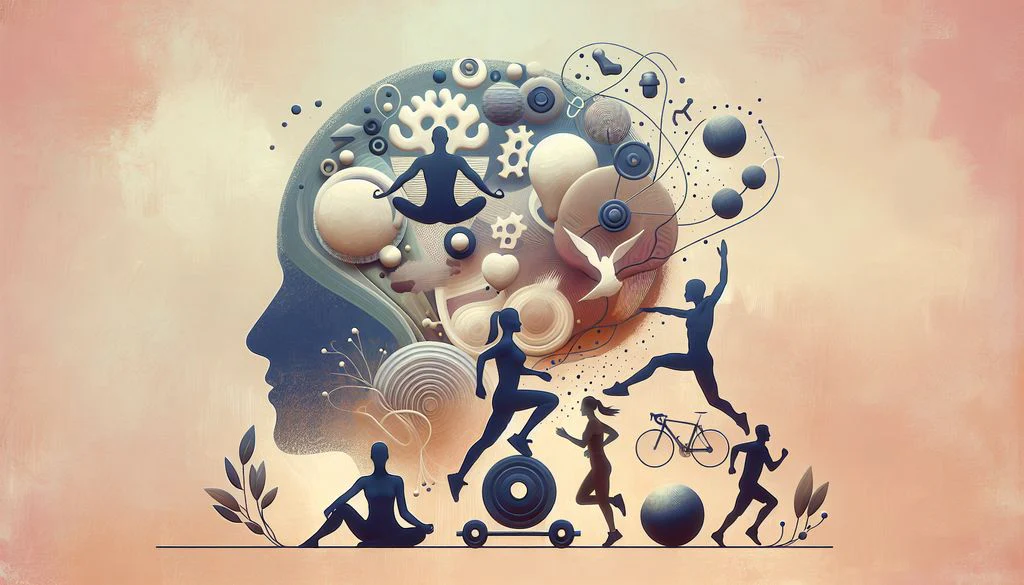Post-Cycle Therapy (PCT) for Experienced Bodybuilders
If you’ve been in the game long enough, you already know that running a cycle isn’t just about the gains—you have to think about what happens after.
That’s where Post-Cycle Therapy (PCT) comes in. Ignore it, and you risk losing all those hard-earned gains, not to mention messing up your hormones in a big way. So, let’s break it down and make sure you recover like a pro.
Why PCT is Non-Negotiable
When you’re on a cycle, whether it’s testosterone, SARMs, or hardcore anabolics, your body’s natural testosterone production takes a hit.
Your endocrine system basically gets lazy because it’s getting all the hormones from an external source.
Once you come off the cycle, your natural production doesn’t just bounce back overnight. That’s where PCT steps in to help restore balance, prevent muscle loss, and keep unwanted side effects like gyno and mood swings in check.
The Core Components of a Solid PCT Plan
A well-structured Post Cycle Therapy (PCT) should include the right combination of compounds to restart natural testosterone production while minimizing estrogen-related issues. Here’s what you’ll need:
Selective Estrogen Receptor Modulators (SERMs)
The backbone of most PCT protocols. These compounds block estrogen receptors and stimulate the production of natural testosterone.
- Nolvadex (Tamoxifen): Typically run at 40/40/20/20 mg per day over four weeks.
- Clomid (Clomiphene): A bit stronger than Nolvadex, dosed at 50/50/25/25 mg per day over four weeks.
Some prefer Clomid, while others go with Nolvadex—or even both, depending on the cycle.
Aromatase Inhibitors (AIs) – Only If Needed
- If you were running a cycle that could cause a serious estrogen rebound (like high-dose testosterone or certain prohormones), an AI like Arimidex (Anastrozole) at 0.5 mg every other day may be necessary for the first couple of weeks.
- Overuse of AIs can tank estrogen levels too much, so be cautious.
Natural Testosterone Boosters
While not as powerful as SERMs, some natural supplements can aid in recovery:
- D-Aspartic Acid (DAA)
- Zinc, Magnesium, and Vitamin D
- Fenugreek or Ashwagandha
These won’t replace SERMs but can give your body a slight edge in bouncing back.
Timing Your PCT Right
When you start PCT depends on what you ran in your cycle:
- Short esters (like Testosterone Propionate): Start PCT 3-5 days after your last injection.
- Long esters (like Testosterone Enanthate or Cypionate): Wait 10-14 days before starting.
- Oral-only cycles (SARMs, prohormones): Usually the day after your last dose.
Common PCT Mistakes to Avoid
- Skipping PCT entirely – Huge mistake. Natural testosterone can take months to recover on its own.
- Underdosing SERMs – If you don’t run an effective protocol, your recovery will be slow and incomplete.
- Overusing AIs – Too little estrogen is just as bad as too much; you need a balance.
- Thinking OTC test boosters are enough – They’re a supplement, not a replacement for SERMs.
- Not getting bloodwork done – If you don’t check your hormone levels post-cycle, you’re just guessing at your recovery.
PCT isn’t the “boring” part of the cycle—it’s just as important as the blast phase. A properly executed PCT ensures that you hold onto your gains, avoid nasty side effects, and get your natural testosterone levels back on track. If you’ve put in the work in the gym, don’t let poor recovery set you back.
Train smart, cycle smart, and always respect your body’s chemistry. Your future gains will thank you.
Human Chorionic Gonadotropin
Human Chorionic Gonadotropin (HCG) is sometimes used in bodybuilding, particularly by those who use anabolic steroids. Here’s what you need to know:
Why Bodybuilders Use HCG
Post-Cycle Therapy (PCT) – HCG helps restore natural testosterone production after a steroid cycle, preventing testicular atrophy (shrinking of testicles).
Maintaining Testicular Function – While on anabolic steroids, HCG can prevent testicular shutdown by mimicking Luteinizing Hormone (LH), which stimulates testosterone production.
Improving Fertility – Steroid use can suppress natural testosterone and sperm production, and HCG may help restore fertility.
Dosage and Usage
- On-Cycle Use: 250–500 IU twice a week to maintain testicular function.
- Post-Cycle Therapy (PCT): 1,000–2,500 IU every other day for 2–3 weeks, followed by selective estrogen receptor modulators (SERMs) like Clomid or Nolvadex.
- Standalone Use: Sometimes used by individuals looking to boost testosterone naturally without steroids.
Side Effects
- Estrogenic Side Effects – HCG can increase estrogen levels, leading to gynecomastia (man boobs) if not controlled.
- Desensitization – Prolonged use can cause the Leydig cells in the testes to become less responsive to LH.
- Water Retention and Mood Swings – Some users report bloating and mood fluctuations due to hormone changes.
Is It Legal?
HCG is a prescription medication in most countries, mainly used for fertility treatment. It is banned by some sports organizations, so competitive athletes should check regulations.
Alternative Options
- Natural testosterone boosters (e.g., ashwagandha, zinc, D-aspartic acid)
- Properly structured PCT with SERMs
HCG and Testosterone Replacement Therapy (TRT) serve different purposes, so whether HCG is “better” depends on your goals. Here’s a breakdown of how they compare:
hCG vs. TRT: Key Differences
| Feature | hCG | TRT |
| Purpose | Stimulates natural testosterone production | Directly replaces testosterone |
| Testicular Function | Maintains fertility & testicular size | Suppresses natural testosterone, leading to shrinkage |
| Fertility | Improves sperm production | Reduces or shuts down sperm production |
| Estrogen Side Effects | Can increase estrogen, requiring control | Also increases estrogen, but dose-dependent |
| Administration | Subcutaneous injections (2-3x per week) | Typically weekly intramuscular injections |
| Best For | Those wanting to preserve fertility, recover natural testosterone (PCT) | Those with long-term testosterone deficiency (Low T) |

When to Choose hCG Over TRT
✅ You want to preserve fertility and natural testosterone production.
✅ You are recovering from a steroid cycle (Post Cycle Therapy – PCT).
✅ You experience mild testosterone suppression but don’t want permanent TRT.
When TRT is the Better Option
✅ You have clinically low testosterone that does not recover naturally.
✅ You don’t care about fertility and want stable, optimized testosterone levels.
✅ You want a long-term solution without fluctuating hormone levels.
Can You Use hCG with TRT?
Yes! Many men on TRT use hCG alongside testosterone to maintain testicular function and fertility. A common protocol is:
- Testosterone (100-200 mg/week IM) for stable hormone levels
- hCG (500 IU 2x/week SC) to prevent testicular atrophy
This combination gives the benefits of TRT while preserving natural testicular function.
- If you want fertility & natural function, hCG is the better choice.
- If you need long-term testosterone replacement, TRT is the better choice.
- If you want the best of both, combine TRT + hCG.
Human chorionic gonadotropin (hCG) is banned in sports because it can be used as a performance-enhancing drug and as a masking agent for steroid use. It is on the World Anti-Doping Agency (WADA) Prohibited List, especially for male athletes. Here’s why:
Boosts Testosterone Production
- hCG mimics luteinizing hormone (LH), which stimulates the testes to produce testosterone.
- Increased testosterone levels can enhance muscle growth, strength, and recovery, providing an unfair advantage.
Masks Anabolic Steroid Use
- Athletes using anabolic steroids may experience testicular atrophy (shrinking of the testes) due to suppressed natural testosterone production.
- hCG helps restore testicular function and normalize testosterone levels, making it harder to detect past steroid use.
Potential for Performance Enhancement
- While hCG itself doesn’t directly enhance performance, its role in testosterone regulation makes it useful for athletes looking to recover from steroid cycles or maintain high testosterone levels.
Because of these reasons, hCG is banned in men under WADA regulations, though it is allowed for medical use in women (such as for fertility treatments).





